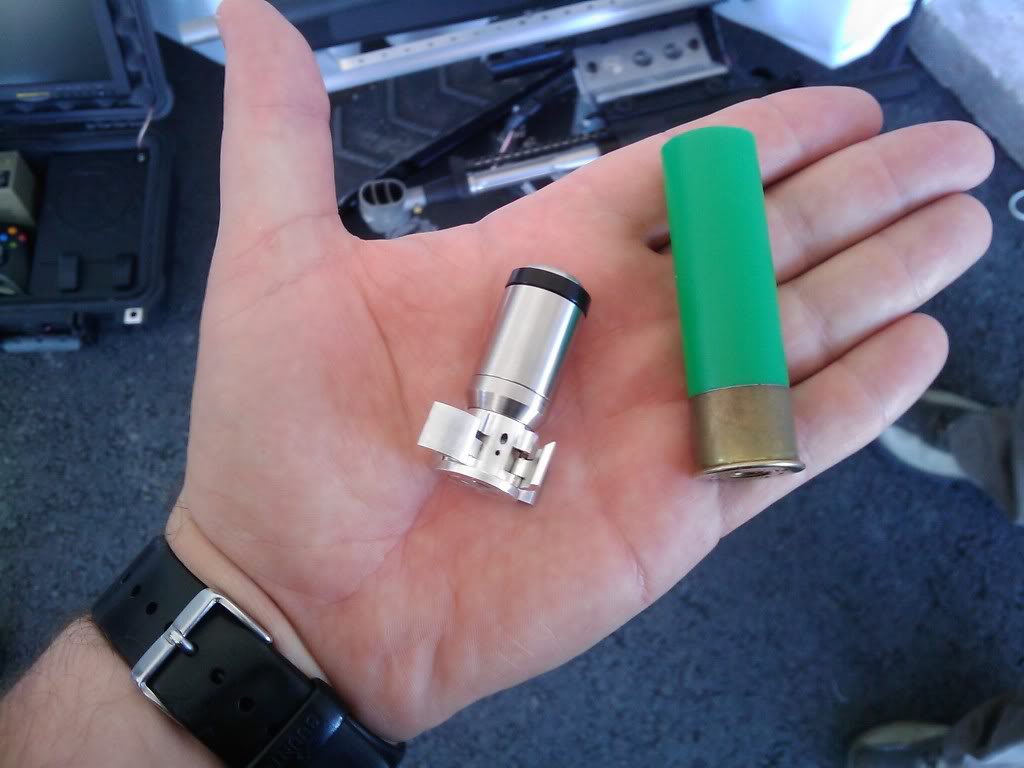- Reaction score
- 36
- Points
- 560
The answer is still "it depends" because there are so many other factors that affect the performance of the round. If you want something that is 100% capable of having devastating terminal effects regardless of the situation of the target (wearing/not wearing armour and plates, under cover/not under cover, strong and muscular/skinny and weak, target at 10m away/target at 2700m away) then your best bet is probably a .50 HMG round. Even then, you will have much more difficulty ensuring you hit the target due to the bulk and unwieldiness of the weapon and training the soldier to use it properly.
For the most part I would agree that something along the lines of a 6.5 to 7mm LSAT round would be the best compromise between terminal ballistics, size and weight, having a practical and controllable weapon and being able to reach out and effectively touch someone out to @ 1000m. A machine gun chambered in the same round would be a pretty devastating support weapon down to the squad/section level, as well as being a fairly effective vehicle mounted weapon as well (co axial MG, loaders/crew commander's turret mounted weapon and RWS all come to mind), especially if paired up with a grenade launcher that has similar size/weight and range performance. The Chinese have a 35mm grenade launcher that is comparable to a C-6 GPMG in size and weight, and the new Russian 30mm grenade launchers can be picked up and carried (with their tripods) by a single man, showing that it is possible.
While LSAT type weapons don't have the same issues with spent casings like conventional rifles, I still think the idea of a compact weapon with the same ballistic performance as a full sized weapon makes a lot of sense. Even if the first generations of bullpup weapons cannot be fired from the "off side" (or at least not without changing the extractor and ejector port), more modern weapons like the FN 2000 can using an ejector tube that allows casings to drop out of the front of the weapon. This isn't even a new concern, I recall reading that during the development phase of the EM-2, some consideration was given to a "sliding breechblock" mechanism similar to that of an artillery piece, that would allow the casing to be ejected in a vertical direction over the shooter's shoulder. While more a case of the British obsession with baroque engineering, it shows there are many ways to skin that particular cat. If we have to assume that the LSAT or something similar is another generation away, then a forward ejecting bullpup weapon would be worth looking at (and chambering it for a 6.5 or 6.8mm round would probably serve to cover the vast majority of wants and needs for shooters everywhere).
For the most part I would agree that something along the lines of a 6.5 to 7mm LSAT round would be the best compromise between terminal ballistics, size and weight, having a practical and controllable weapon and being able to reach out and effectively touch someone out to @ 1000m. A machine gun chambered in the same round would be a pretty devastating support weapon down to the squad/section level, as well as being a fairly effective vehicle mounted weapon as well (co axial MG, loaders/crew commander's turret mounted weapon and RWS all come to mind), especially if paired up with a grenade launcher that has similar size/weight and range performance. The Chinese have a 35mm grenade launcher that is comparable to a C-6 GPMG in size and weight, and the new Russian 30mm grenade launchers can be picked up and carried (with their tripods) by a single man, showing that it is possible.
While LSAT type weapons don't have the same issues with spent casings like conventional rifles, I still think the idea of a compact weapon with the same ballistic performance as a full sized weapon makes a lot of sense. Even if the first generations of bullpup weapons cannot be fired from the "off side" (or at least not without changing the extractor and ejector port), more modern weapons like the FN 2000 can using an ejector tube that allows casings to drop out of the front of the weapon. This isn't even a new concern, I recall reading that during the development phase of the EM-2, some consideration was given to a "sliding breechblock" mechanism similar to that of an artillery piece, that would allow the casing to be ejected in a vertical direction over the shooter's shoulder. While more a case of the British obsession with baroque engineering, it shows there are many ways to skin that particular cat. If we have to assume that the LSAT or something similar is another generation away, then a forward ejecting bullpup weapon would be worth looking at (and chambering it for a 6.5 or 6.8mm round would probably serve to cover the vast majority of wants and needs for shooters everywhere).




